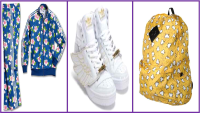
[Purpose] The present research aims to provide fundamental material required for establishing effective marketing strategies by analyzing purchasing experience of sports and art collaboration products and the determinants of purchasing intention. [Methods] Total of 370 survey questionnaires were distributed to undergraduate and graduate students in Seoul and Gyeonggi area and 331 questionnaires were analyzed as the final valid samples. For the data analysis, SPSS 18.0 version was used for frequency analysis, descriptive statistics analysis, exploratory factor analysis, reliability analysis, cross analysis, and logistics regression analysis. [Results] The study results are as follows. First, as a result of cross analysis on general characteristics, there was significant difference in age, monthly income and allowance, number of average purchases, considerations and major. Second, as a result of cross analysis on purchasing intention, there was significant difference in gender, monthly income and allowance, number of average purchases, considerations and major. Third, as a result of analyzing determinants of purchasing intention, there was significant difference in monthly income and allowance, number of average purchases, and sincerity. Fourth, as a result of analyzing determinants of purchasing intention, there was significant difference in gender, number of average purchases, considerations, major, creativity, aesthetics, interest and tenacity.

PURPOSE This study aims to provide empirical foundational data for the development of a new profit model in Korean professional baseball. It does so by examining the influence of professional baseball NFT product attributes on customer perceptions of value, satisfaction, and purchase intention. METHODS Data were collected from consumers who have experience purchasing KBOLLECT. A total of 363 samples were collected for analysis. Surveys were utilized for data collection, encompassing 39 items that measured product characteristics, perceived value, satisfaction, purchase intention, and demographic information. Using the collected data, various statistical analyses were conducted including descriptive statistics, exploratory factor analysis, reliability analysis, correlation analysis and multiple regression using SPSS version 21. The ensuing results from the correlation analysis and multiple regression analysis are as follows. RESULTS Product features, including aesthetics, symbolism, and scarcity, had a positive impact on consumer’s perceived emotional value. Moreover, product features, encompassing aesthetics, symbolism, scarcity, and creativity played a significant role in enhancing consumer’s perceived economic value. Furthermore, product attributes such as aesthetics, symbolism, and creativity positively contributed to consumer’s perceived social value. Similarly, product features comprising aesthetics, scarcity, creativity, and symbolism positively affected consumer’s perceived intellectual value. Additionally, the research revealed that product features related to aesthetics, symbolism, creativity, and scarcity were instrumental in bolstering consumer. Importantly, these very attributes, including aesthetics, symbolism, scarcity, and creativity, exhibited a positive influence on consumers’ purchase intentions. CONCLUSIONS In conclusion, this study underscores the substantial impact of professional baseball NFT product characteristics on consumers’ perceptions, satisfaction, and purchase intentions. To maintain enduring relationships with consumers who engage with professional baseball NFT products, it is essential to fortify these product attributes and offer diverse services utilizing them.

The purpose of this study was to examine competitiveness of sport product companies by brand origin in the Korean market by analyzing attribute evaluation of sport products, brand equity, and purchase intention and their causal relationship. Competitive sport brands were selected in global, Japanese, and Korean brands by a pilot survey. Then, this study selected a population participating in sports for all, elite sports, professional sports, and leisure sports and 498 effective questionnaires were secured. As a result, Korean consumers for sport products evaluated global sport brands in the highest level, Japanese sport brands in the moderate level, and Korean sport brands in the lowest level in the evaluation of attribute evaluation of sport products, brand equity, and purchase intention. Moreover, the evaluation of participating types in sports for all, elite sports, professional sports, and leisure sports showed the same result in the order of global, Japanese, and Korean sport brands. Global sport brands had a sequential causal relationship from attribute evaluation of sport products to brand equity and purchase intention and formed a consumption behavior model that attribute evaluation of sport products led to purchase intention. On the other hand, while Korean sport brands had a sequential causal relationship from attribute evaluation of sport products to brand equity and purchase intention, attribute evaluation of sport products did not lead to purchase intention. Finally, it was confirmed that global brands such as Nike and Adidas had a high market position and Korean sport consumers’ purchase behavior was determined based on information of product attributes and brand equity.

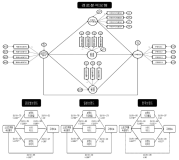
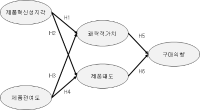
The aim of this study is to empirically verify the relationships between innovativeness perception of and involvement in sports products, and hedonic value, product attitude and purchase intention through the structural equation model. For this purpose, this study conducted a questionnaire survey of 291 college students in Chungcheong region. Sampling method was Quota Sampling Mode, and questionnaire has been structured to be self-administerd type. SPSSWIN Ver. 21.0 and AMOS 18.0 have been used for data processing. As a result, first, it was found that innovativeness perception had a positive influence on hedonic value; second, innovativeness perception had a positive influence on product attitude; third, product involvement had a positive influence hedonic value; fourth, product involvement had a positive influence on product attitude; fifth, hedonic value had a positive influence on purchase intention; sixth, product attitude had a positive influence on purchase intention. Such results imply that it's not desirable to overlook the level of innovativeness perception & involvement from a corporate perspective when an enterprise develops and launches new sports products.

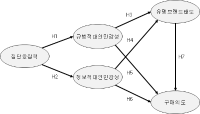
The objective of the current study is to empirically reveal the impact of self-recognized group cohesiveness and interpersonal susceptibility (normative interpersonal susceptibility and informative interpersonal susceptibility) on mountain bikers’ attitude toward name brand and purchase intents using structural equation model. In order to achieve this goal, the researchers surveyed 217 mountain bikers in six mountain bikers’ clubs in Chungcheong-do province area in South Korea. In order to validate the proposed structural model, SPSSWIN version 21.0 and AMOS 18.0 were utilized. The results showed that first, group cohesiveness had a positive influence on the bikers’ normative and informative interpersonal susceptibility. Second, normative and informative interpersonal susceptibility positively influenced attitude toward name brand. Third, normative interpersonal susceptibility did not positively influence the purchase intent, but informative interpersonal susceptibility did. Fourth, attitude toward name brand positively influenced the purchase intent.


Purpose The purpose of this study was to examine the effects of temporal and spatial distance and types of advertising messages on sport consumer’s attitudes toward and advertising and purchase intentions, based on the construal level theory. Methods Toward this end, 253 usable data were conducted using frequency analysis, exploratory factor analysis, reliability analysis, correlation analysis, MANOVA, and ANOVA with SPSS 24.0. Results and Conclusion The study obtained the conclusion that when using different types of messages, the consumer’s attitudes and purchase intentions are influenced by temporal distance, by spatial distance, and by the interaction between both factors.

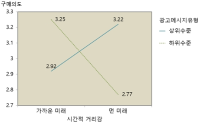


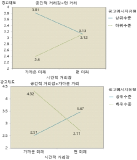



PURPOSE This study explores the impact of visual shape and exercise involvement on consumers' evaluation and happiness with healthy functional foods, specifically protein cookies. METHODS Using a one-factor design with two levels (pretty vs. ugly shape) and one measured variable (exercise involvement), we uncover interesting insights. RESULTS Consumers highly engaged in exercise show a greater purchase intention for ugly-shaped healthy functional foods compared to pretty-shaped ones. Conversely, consumers with low exercise involvement express a higher purchase intention and happiness when it comes to pretty-shaped healthy functional foods compared to their ugly counterparts. CONCLUSIONS These findings contribute to the sports management and sports science literature by shedding light on how visual shape influences the evaluation of healthy functional foods by sport consumers. Furthermore, this research offers valuable practical implications for designing the shape of such foods to cater to the preferences of sports enthusiasts.

There are expanding the base of amateur baseball with diverse factors and corporations are getting more interested in making opportunities to build relationships with customers by using this phenomenon. However, the previous research did not focus on examine practical effectiveness for relationship marketing methods as the strategy of the building relationship which was applied to sport events from diverse corporations. Therefore, the purpose of this study is to examine the practical effectiveness of the relationship marketing methods and the influencing process of the relationship marketing strategy applied to the amateur baseball. 150 players who took part in the amateur baseball tournament hosted by the on-line shopping mall company were selected for research samples with random assignment. To examine the practical effectiveness, 136 players' survey responses out of 150 responses were used for research data. For hypotheses testing, this study applied PLS structural equation model. This study presented that perceived face to face and listen as relationship marketing methods were significantly positive influenced on perceived relationship quality. In addition, perceived relationship advertising as relationship marketing methods were significantly positive influenced on perceived purchase intention. Moreover, perceived relationship quality was significantly positive influenced on perceived purchase intention. In the case of mediating effect with considering relationship quality, there was partial mediating effect for relationship advertising and face to face, and there was complete mediating effect for listen.


[Purpose] The purpose of this study is to analyze the effect size of the relationship between team identification and their intention to attend sport events and intention to purchase licensed team merchandise using a Meta-analysis. [Methods] To accomplish the purpose of the study, multiple databases were visited (e.g., RISS, KISS, Library of National Assembly) and studies were collected using the keyword of team identification. Through the search process, total of 92 studies were identified, among which 20 studies provided Pearson correlation coefficients between team identification and intention to attend and 13 studies between team identification and intention to purchase licensed team merchandise. The 33 studies were analyzed using Comprehensive a Meta Analysis(CMA) program. The analyses were done using random effect model assuming there were significant heterogeneity among the studies included. [Results] The overall effect size between team identification and intention to attend sport games was .567 and .403 for between team identification and intention to purchase licensed team merchandise, which can be classified as large effect size(Cohen, 2013). Sub-group analyses were done using types of publication(journal article vs. thesis). The results of the sub-group analyses indicated that the effect size differences were statistically insignificant. [Conclusions] As indicated in many previous studies, team identification was found to be a significant predictor of sport consumers’ behaviors. However, future studies need to find the reasons of heterogeneity in effect sizes.

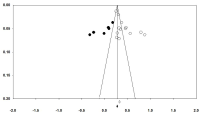

Purpose The purpose of this study was to analyze the relationships among sport-products self-congruence, product love, product trust, and purchase behavior of sports-for-all club members through structural equation model analysis. Methods A survey was conducted targetting 227, men & women in their twenties who are members of MTB, Tennis, Badminton, Golf in at the 8 in Seoul metropolitan area. For sampling method, convenience sampling method was used, while the questionnaire was self-administered. In an effort to verify the proposed structural model, this study used IBM SPSSWIN Ver. 21.0 and AMOS 18.0. Results First, actual self-congruence has positive influence on the product love. Second, ideal self-congruence didn't have positive influence on the product love. Third, social self-congruence has positive influence on the product love. Fourth, product love has positive influence on the product trust. Fifth, product trust has positive influence on the positive word-of-mouth. Sixth, product trust has positive influence on the repurchase intention. Seventh, product trust has positive influence on the attitudinal loyalty.

